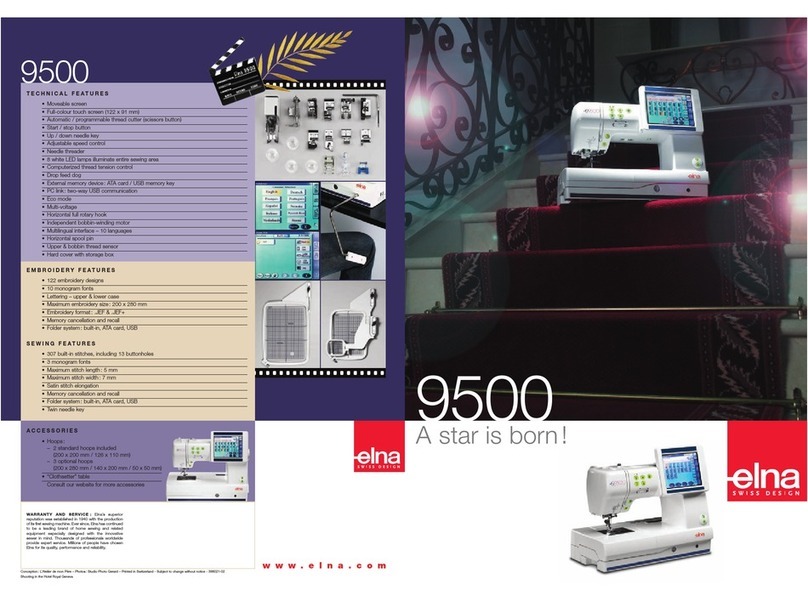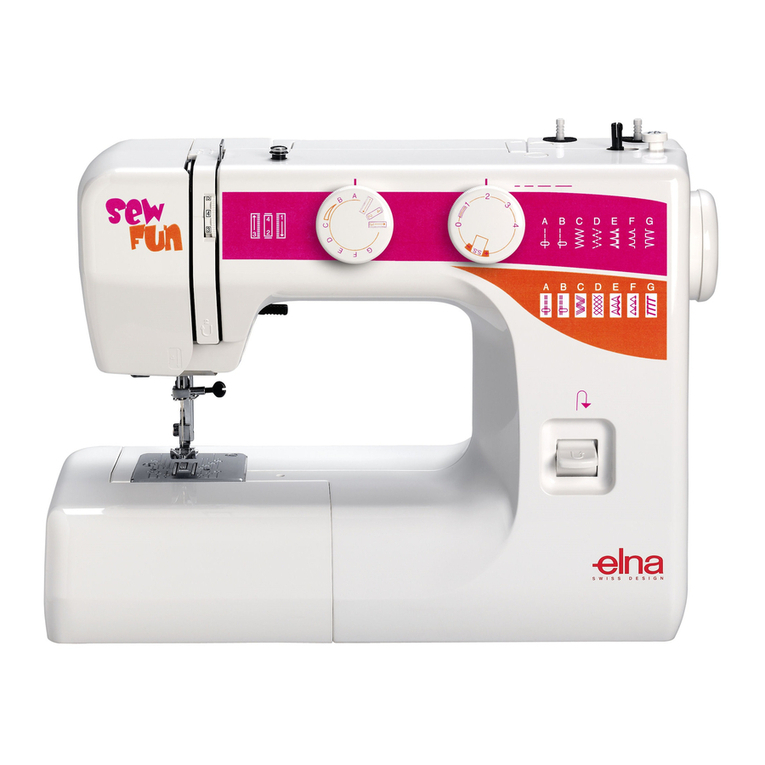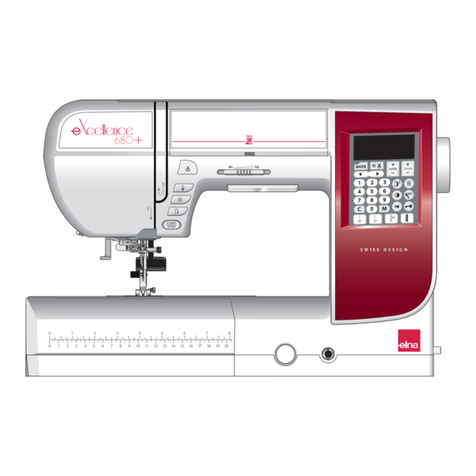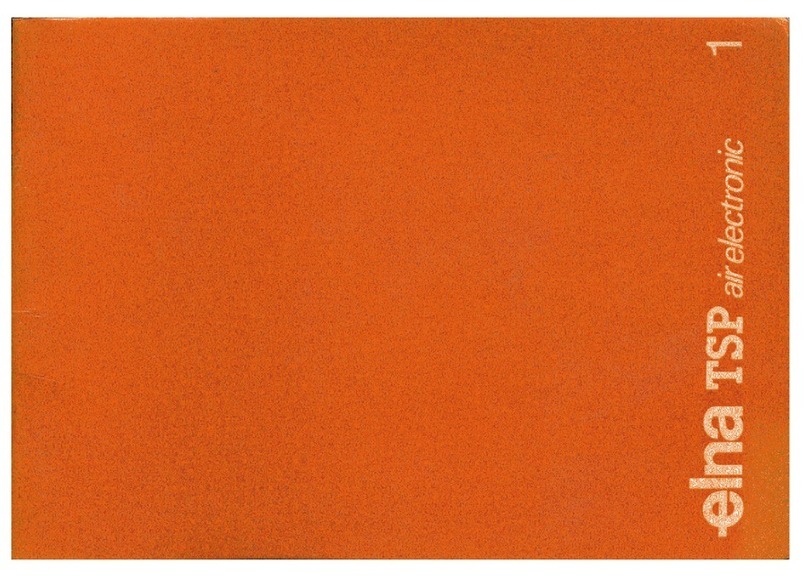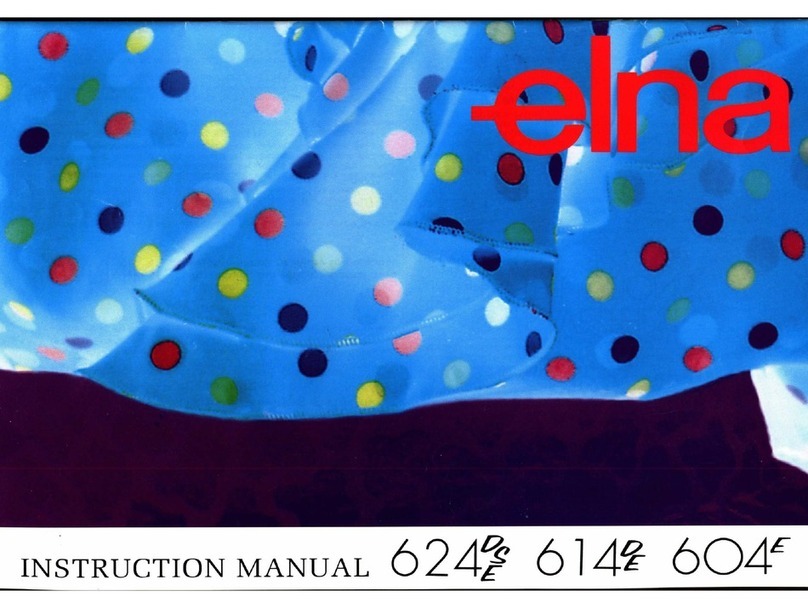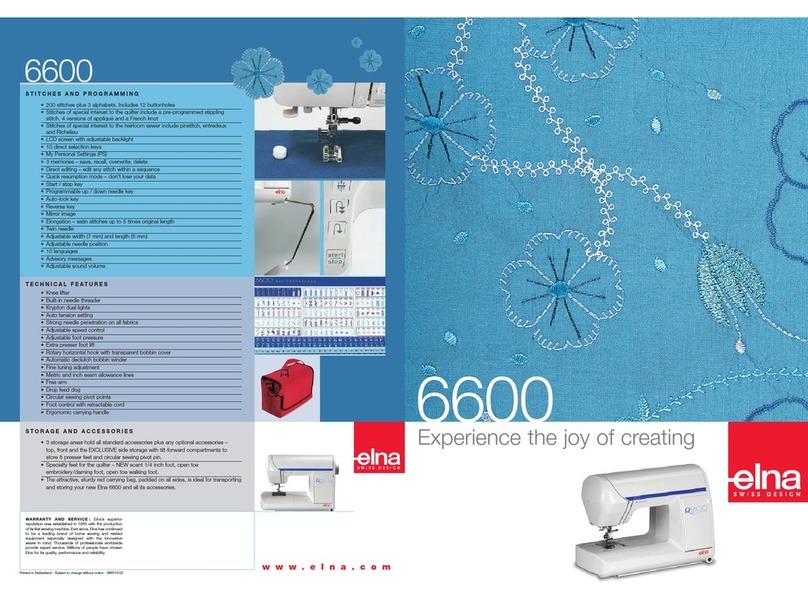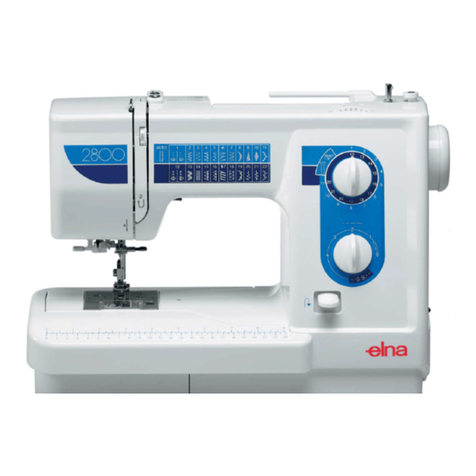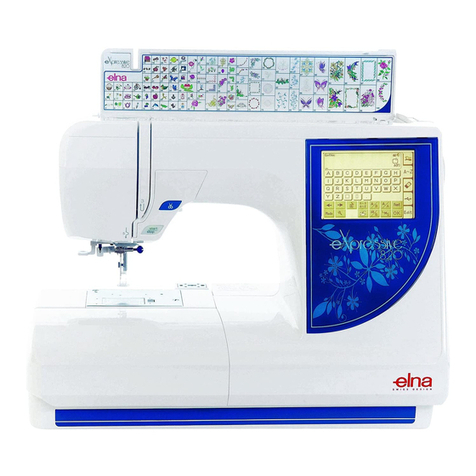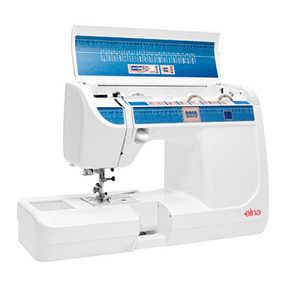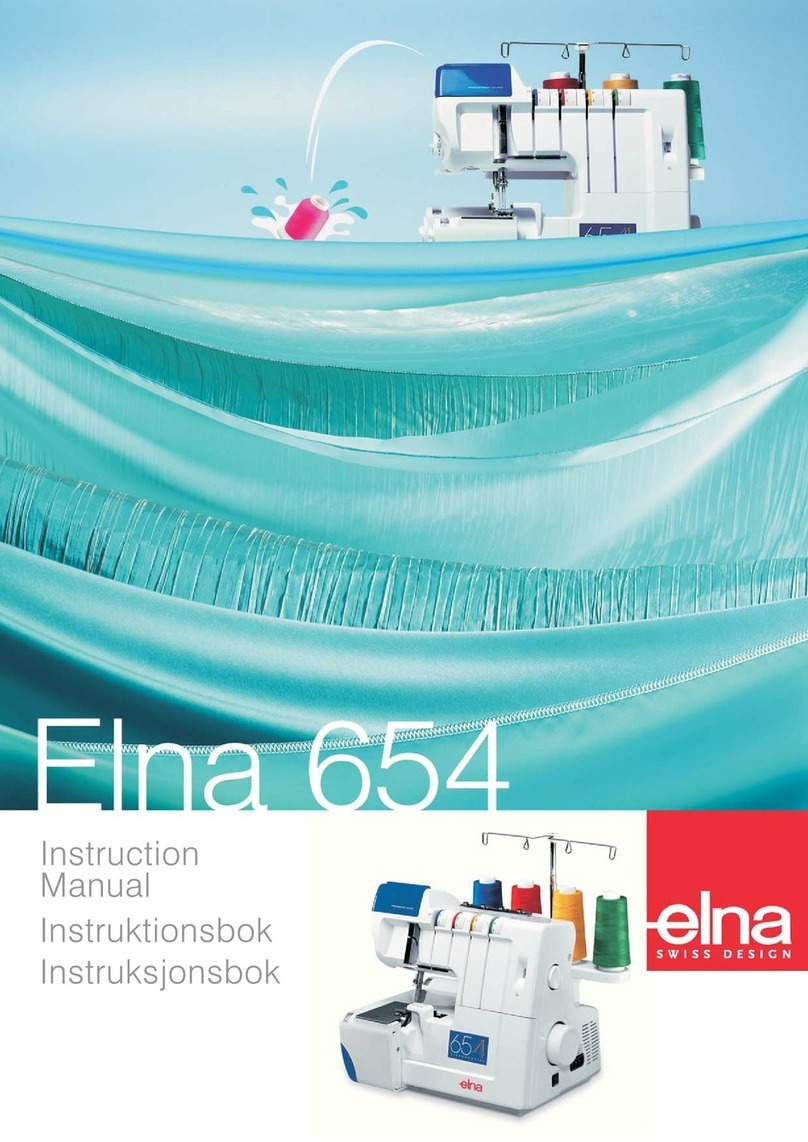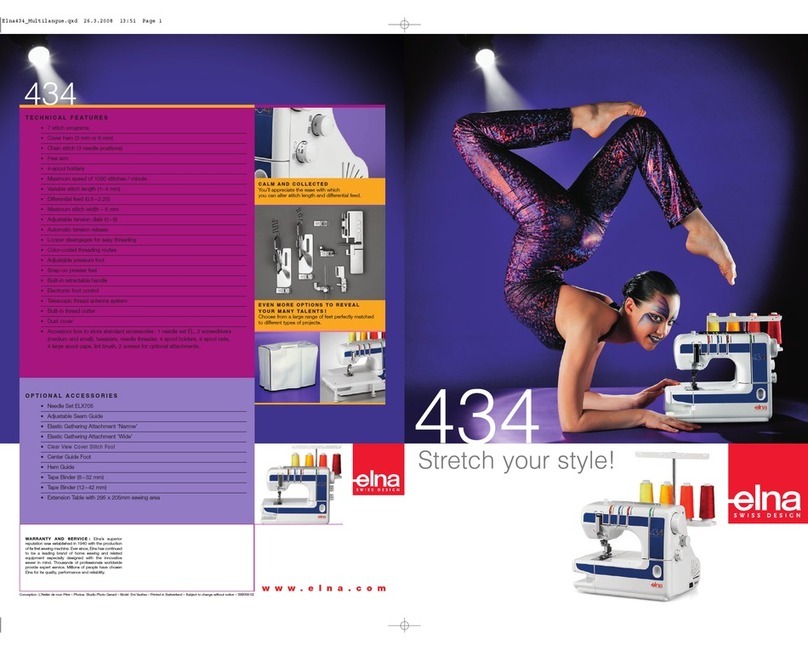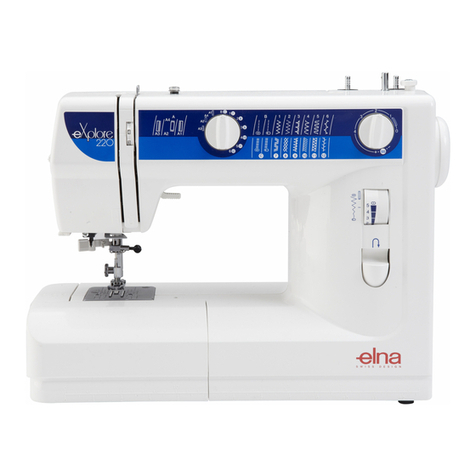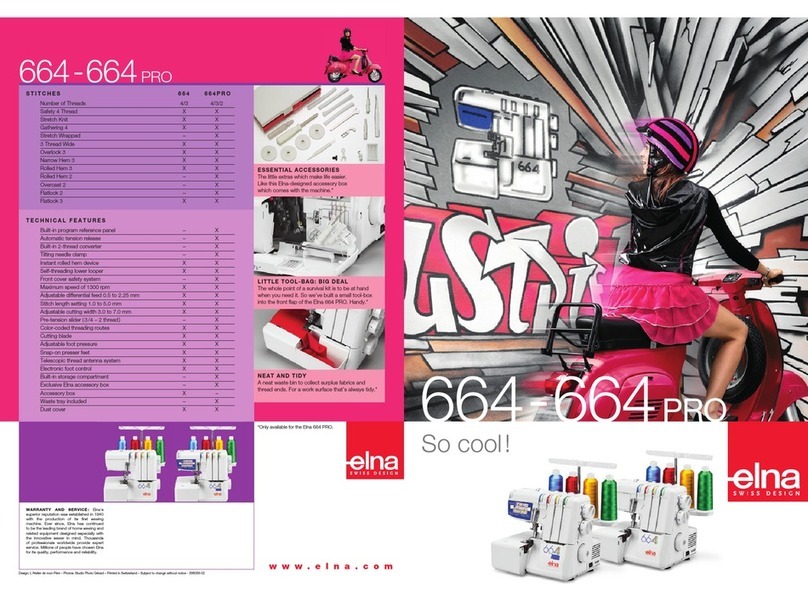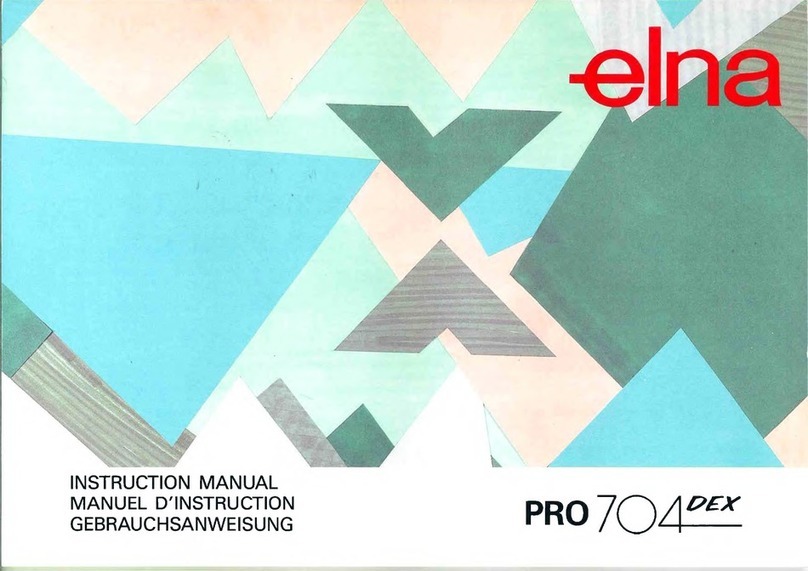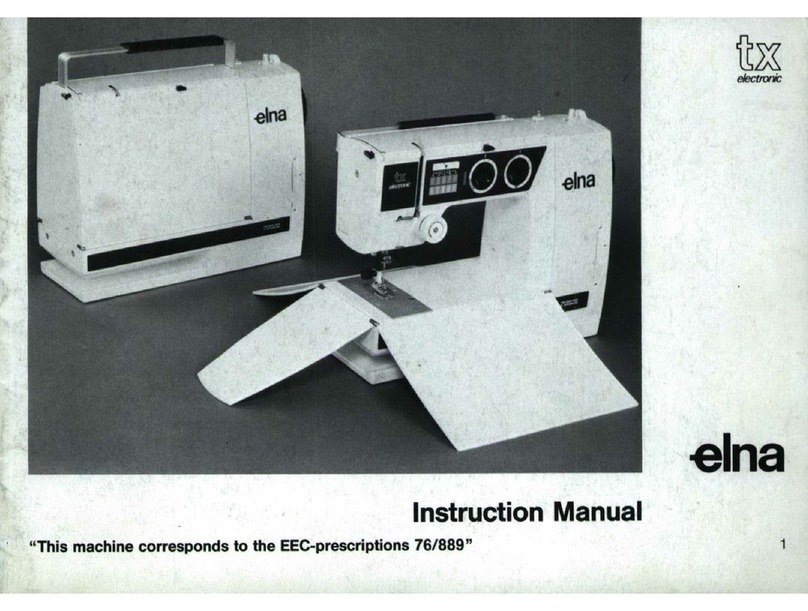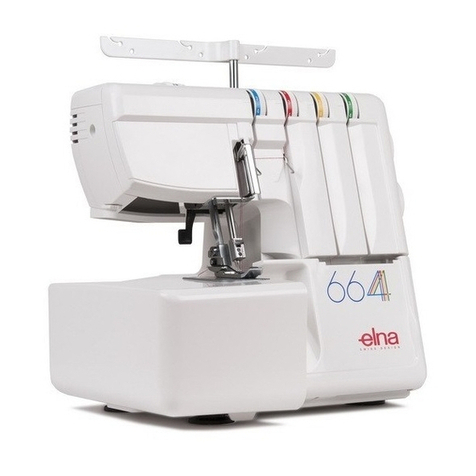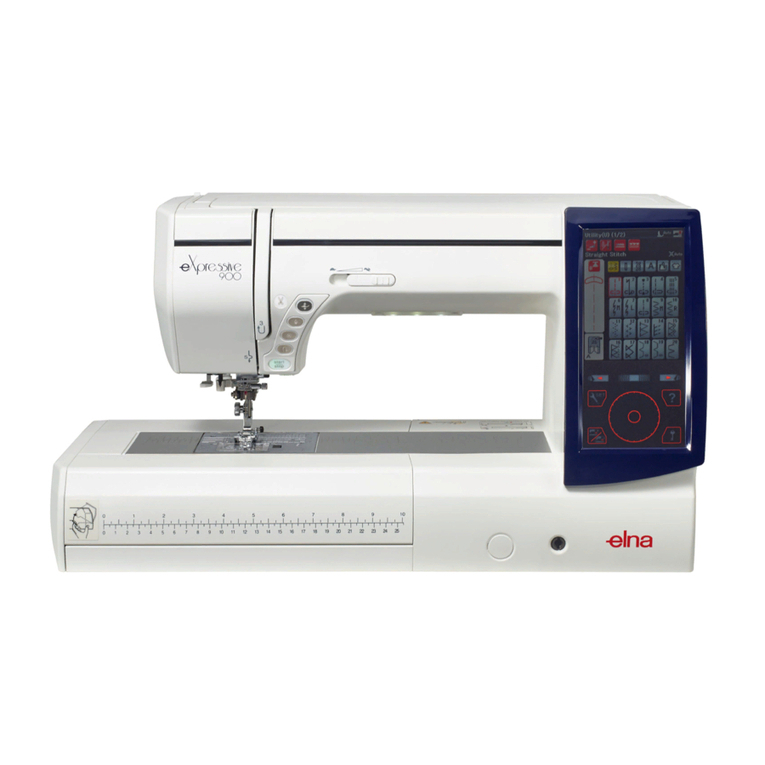TABLE OF CONTENTS
GETTING READY TO SEW
Names of Parts.................................................................. 1-2
Extension Table .................................................................... 2
Accessory Storage ............................................................... 3
Standard Accessories........................................................ 4-5
Embroidery unit case............................................................ 5
Connecting the Power Supply .............................................. 6
Controlling Sewing Speed .................................................... 7
Speed control slider........................................................... 7
Foot control........................................................................ 7
Machine Operating Buttons.................................................. 8
Touch Panel Keys ................................................................. 9
Setting the Spool of Thread................................................ 10
Winding the Bobbin ....................................................... 10-12
Removing the bobbin....................................................... 10
Winding the bobbin.......................................................... 11
Inserting the bobbin ......................................................... 12
Threading the Machine....................................................... 13
Needle threader.................................................................. 14
Drawing up the Bobbin Thread ........................................... 15
Replacing Needles ............................................................. 16
Needle Definitions .............................................................. 17
Replacing the Presser Foot ................................................ 18
Replacing the Foot Holder.................................................. 19
Replacing the Needle Plate................................................ 20
Raising and Lowering the Presser Foot.............................. 21
Knee lifter ........................................................................... 21
Adjusting the Foot Pressure ............................................... 22
Raising and Dropping the Feed Dog .................................. 22
Mode Selection................................................................... 23
ORDINARY SEWING MODE
Ordinary Stitch Patterns ................................................ 24-25
Function Keys in Ordinary Sewing Mode....................... 26-27
Utility Stitches..................................................................... 28
Straight stitches .................................................................. 28
Starting to sew................................................................. 28
Sewing from the edge of thick fabric................................ 28
Changing sewing direction............................................... 28
Turning a square corner................................................... 28
Securing seams............................................................... 29
Cutting threads ................................................................ 29
Using the seam guide lines ................................................ 29
Variety of straight stitches.............................................. 30-31
Zigzag stitches.................................................................... 31
Variety of overcasting stitches .................................... 32-33
Manual Stitch Settings................................................... 34-35
Cloth guide ......................................................................... 36
Buttonholes and Specialty Stitches .................................... 37
B1 Sensor (Square) buttonhole..................................... 38-39
Manual settings .................................................................. 40
B2 Automatic (square) buttonhole ................................. 41-42
Other buttonholes ............................................................... 43
Corded buttonhole .............................................................. 44
B7 Darning ......................................................................... 45
B9 Eyelet ............................................................................ 46
Decorative Stitches........................................................ 47-48
Circular Sewing .................................................................. 48
Quilting(Q) .......................................................................... 49
S1-S12 Decorative satin stitches........................................ 50
Created Stitches(CS).......................................................... 51
Twin Needle Sewing ........................................................... 52
Programming a Pattern Combination ................................. 53
Editing a pattern combination............................................. 54
Startover key ...................................................................... 55
Checking pattern combination length ................................. 55
Monogramming................................................................... 56
Function keys ..................................................................... 56
Manual thread tension........................................................ 57
Individual thread tension adjustment ............................... 57
Unified thread tension adjustment ................................... 57
Spacing............................................................................... 57
Reducing the size of letters ................................................ 57
Programming a monogram................................................. 58
Sewing Application ............................................................. 59
Seaming........................................................................... 60
Overedge ......................................................................... 61
Blind hem......................................................................... 62
Shell tuck ......................................................................... 63
Rolled hem....................................................................... 64
Zipper sewing ............................................................. 65-67
Gathering......................................................................... 68
Basting............................................................................. 68
Button sewing .................................................................. 69
Tacking............................................................................. 70
Applique........................................................................... 71
Patchwork ........................................................................ 72
Quilting........................................................................ 73-75
CUSTOMIZING MACHINE SETTINGS
Common Setting Mode ................................................. 76-79
Ordinary Sewing Setting Mode...................................... 80-82
Correcting Deformed Stitch Patterns.................................. 83
EMBROIDERY MODE
Embroidery Unit.................................................................. 84
Attaching the embroidery unit.......................................... 84
Extending the carriage arm ............................................. 85
Detaching the embroidery unit......................................... 86
Attaching the Embroidery Foot ........................................... 87
Foot pressure ..................................................................... 87
Attaching the Straight Stitch Needle Plate.......................... 88
Special Bobbin Holder for Embroidery ............................... 89
Embroidery Hoops.............................................................. 90
Stabilizers ........................................................................... 91
Setting the Fabric in an Embroidery Hoop.......................... 92
Attaching the Embroidery Hoop to the Machine................. 93
Selecting Built-in Embroidery Designs ............................... 94
Monogramming................................................................... 95
Function keys................................................................... 96
Programming a monogram .............................................. 97
2- Letter monogram ......................................................... 98
Editing a monogram......................................................... 99
Ready to Sew Window............................................... 100-103
Starting to sew embroidery............................................... 104
Fringe design ................................................................. 105
Applique designs .................................................... 106-107
Editing Mode.............................................................. 108-113
Free Arm Hoop (optional item) ......................................... 114
CUSTOMIZING MACHINE SETTINGS
Embroidery mode settings......................................... 115-117
FILE MANAGEMENT
Saving and Opening a File ............................................... 118
Saving a file ................................................................... 118
Creating a new folder..................................................... 119
Opening the file.............................................................. 120
Viewing file names......................................................... 120
Changing a name of the file or folder............................. 121
CARE AND MAINTENANCE
Cleaning the Hook Area ................................................... 122
Cleaning the Inside of the Thread Guide.......................... 123
Troubleshooting ......................................................... 124-125
STITCH CHART ....................................................... 126-128
DESIGN CHART ...................................................... 129-132
